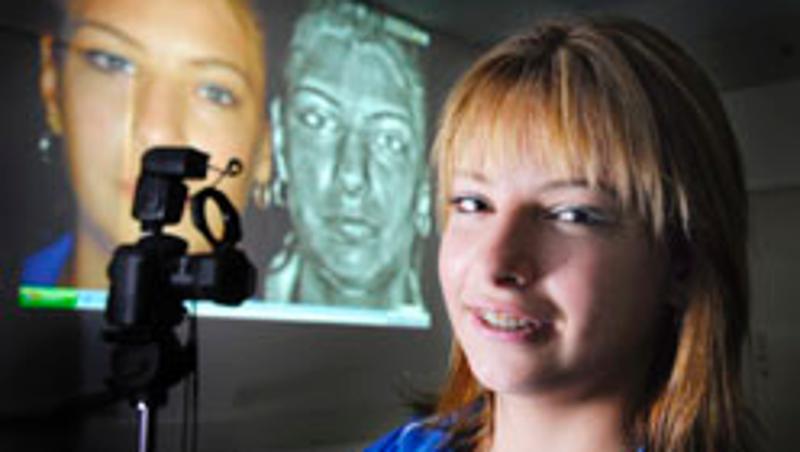
Pictures from a unique new camera that gives instant images of skin sun damage proved a wake-up call for a group of Year 10 students who had their faces photographed at Queensland University of Technology's new health clinic.
The camera, which is the only one of its type in Australia, gave the 14-year-old students from Dakabin State High School graphic images on a big screen of the damage to the lower layers of their facial skin, Associate Professor Michael Kimlin of QUT's AusSun Research Laboratory, said.
"Many had early signs of photo ageing - wrinkles and spots and blemishes - I was surprised to see some had the skin age of a 25-year-old," Professor Kimlin said.
He said the students found it interesting to see the signs of visible damage which appear as black areas in the photos.
"None of the students said they were using sunscreen so it gave them a reason to rethink their attitude to the sun. The take-home message was to check their skin regularly and to protect it from the sun and further damage," he said.
"The benefit of the new facial imaging camera is that people can see the damage there and then, they have irrefutable evidence that not protecting their skin is having consequences."
Professor Kimlin said all the students said they now intended to use sunscreen.
"We hope that we have given them reason to become sun-safe because they are entering the age when, unfortunately, young people still spend hours sunbaking on the beach and think a tan is a fashionable accessory.
"These photos showed them that wrinkles, sun spots and blotches are already starting because the sun has caused changes in the lower layers of their skin."
Members of the general community may also take advantage of this camera and be part of a wide-ranging skin cancer study.
"People who come in will be asked to fill out a short questionnaire, have pictures of their face taken and have a look at their sun damage. They will receive a print-out of their results and have their progress tracked over time," he said.
"Participants can take the print-outs to their doctor and talk to them about what they can do if they like."
Professor Kimlin said while genes played a major part in skin cancer risk, with the olive-skinned at less risk than the fair, behaviours such as not wearing sunscreen, being exposed to the sun for long periods, and smoking, all damaged the skin.
To take part in the study and have images taken of your sun damage, phone Naomi Westwood on 07 3138 0004 or email naomi.westwood@qut.edu.au.
** High res photo available for media use.


